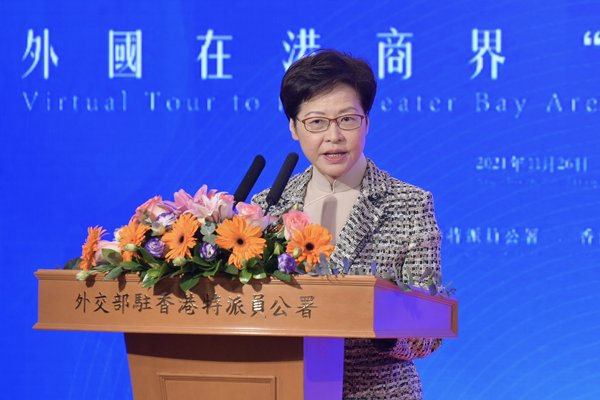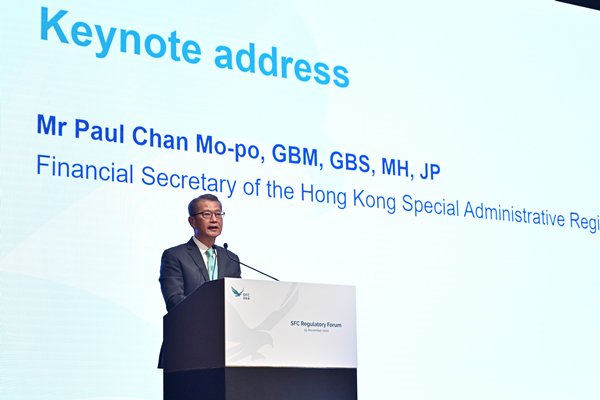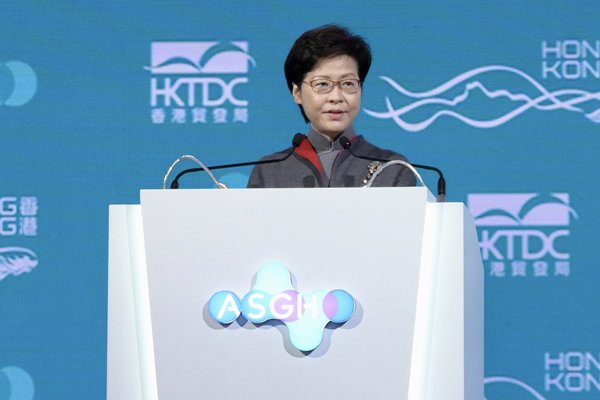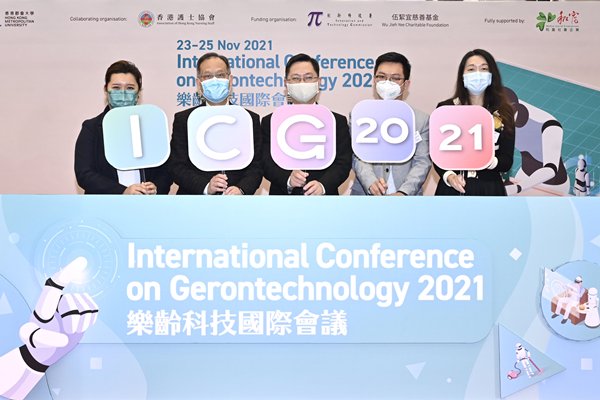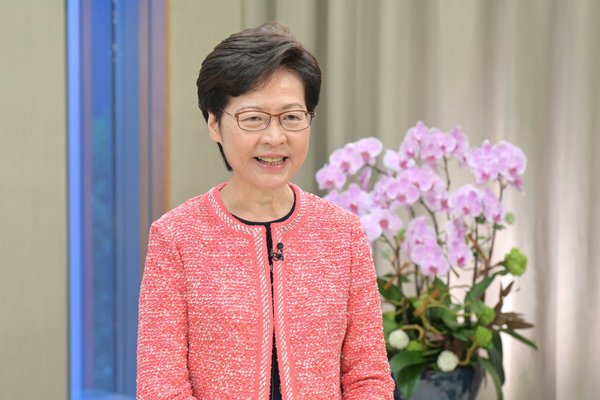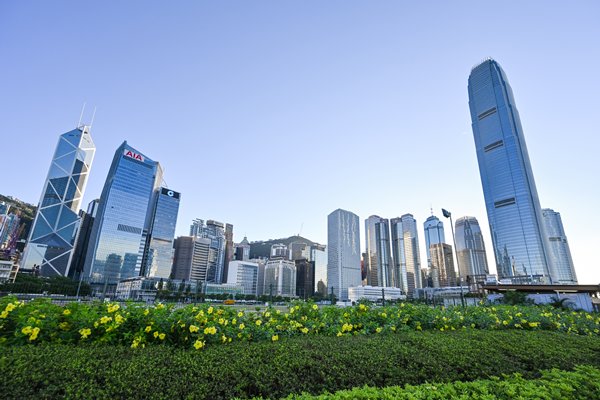
I am pleased to have this welcome opportunity to address the Hong Kong Green Finance Association’s annual forum once again and pleased to share with you the Hong Kong Special Administrative Region Government’s continuing efforts in Hong Kong’s rise as a green and sustainable finance hub.
That ambitious goal reflects our interest in expanding Hong Kong’s financial offerings and capabilities, in giving global businesses and investors more good reasons to turn to Hong Kong as their international financial centre. It is also part of our larger commitment to Hong Kong and our country.
Embracing sustainability, in finance and the environment, speaks to tomorrow’s Hong Kong – a prosperous and progressive economy and community, a regional green hub for finance as for lifestyle. And we are determined to deliver on that promise.
Last month, we published our Climate Action Plan 2050. It sets out proactive strategies and measures designed to reduce carbon emissions.
With the support of business and our community, we hope to reduce Hong Kong’s carbon emissions by 50% before 2035 and to achieve carbon neutrality before 2050.
As an international financial centre, Hong Kong is home to a large and diversified financial market. That includes a world-class regulatory framework. It brings together leading financial and professional institutions and green assessment and certification bodies, as well as international investors.
In short, Hong Kong has the wide-ranging expertise to emerge as a green finance hub for the region, as well as a premier financing centre for green enterprises and projects. What’s more, it has what it takes and what the world needs to play an important role in combating climate change.
Rest assured, we will continue to work in concert with our financial regulators and the industry, taking a multi-pronged strategy to promote green and sustainable finance in Hong Kong.
By developing green finance, we are not just attracting resources for our own sustainable development, but, more importantly, serving to support our country’s “30·60” targets for carbon emission peak and carbon neutrality.
Just two weeks ago, we completed the successful offering of another US$3.75 billion worth of green bonds denominated in US dollars, euro and renminbi. More than enriching the green and sustainable finance network, that is the Hong Kong SAR Government’s inaugural offering of renminbi-denominated bonds and euro-denominated bonds, allowing us to reach out to new groups of investors while setting an important new benchmark for potential issuers in Hong Kong and in the region.
Interestingly, that was also the first time an Asian government issued a euro-denominated green bond of as long as 20 years. At the beginning of this year, we issued a 30-year US dollar-denominated green bond – also the first issuance among Asian governments.
Meanwhile, we are actively preparing for the issuance of a retail tranche, providing the public with an avenue to invest in and promote our green economy.
Green bond issuance is just part of our efforts to develop Hong Kong into a green finance centre in the Asia-Pacific region. Underpinned by the Green & Sustainable Finance Cross‑Agency Steering Group established in May last year, we have indeed been working on this along three main directions.
On green finance infrastructure, the steering group has launched the Centre for Green & Sustainable Finance to support the industry in areas such as capacity building, data collection and analysis.
On the regulatory front, our regulators have introduced regulatory measures on climate risk management and disclosure. We are also working towards adopting the Common Ground Taxonomy developed by the Mainland and the European Union, with the aim of providing a unified standard among the financial sector.
On enhancing public awareness on green finance, other than creating more green business opportunities for the financial sector, we are leading by example by engaging our Exchange Fund in responsible investment and expanding its green portfolio.
With China’s dual “30·60” targets in place, as the green and sustainable finance hub in the region Hong Kong could play an important role in channelling international funds to support our country’s transformation to a green economy.
The Shenzhen Municipal Government recently issued RMB5 billion municipal government bonds in Hong Kong, the three-year and five-year tenors of which totalling RMB3.9 billion were green bonds. We welcome more Mainland municipal governments, entities and corporates to make use of Hong Kong’s capital market for green and sustainable financing and certification to support their green projects.
We are assessing the feasibility of Hong Kong becoming a regional carbon-trading centre as well, while exploring opportunities presented by carbon-emission markets in the Mainland and overseas.
And the Government is promoting co-operation between the HKEX (Hong Kong Exchanges & Clearing) and the Guangzhou Futures Exchange in such areas as clearing, technology, product development and marketing. It’s part of our continuing efforts to create a green, low-carbon market in the region.
That includes raising awareness of environmental, social and governance (ESG) issues, given ESG’s natural fit with sustainability and finance. Indeed, we have recently added professionals in ESG to the Hong Kong Talent List. That list, created in 2018, identifies talented individuals from a wide variety of professions. The goal, of course, is to persuade them that their future is waiting for them right here in Hong Kong.
We are also actively promoting the Green & Sustainable Finance Grant Scheme – for good reason. We want to encourage the issuance of more green and sustainable bonds and loans in Hong Kong.
We are also keen to attract financial and professional service providers, and external reviewers, to set up in Hong Kong. Their presence can boost our green finance business.
In its first six months, the grant scheme has approved about 30 applications covering a welcome variety of green and sustainable debt instruments.
That, ladies and gentlemen, is just the beginning. We are pursuing green finance and sustainability, and the hub role Hong Kong can, and will, play in it. Soon enough, the world will come to associate green not only with money and the environment but with Hong Kong – the green city.
Financial Secretary Paul Chan gave these remarks online at the 2021 Hong Kong Green Finance Association Annual Forum – Financing Carbon Neutrality in Asia on November 30.


